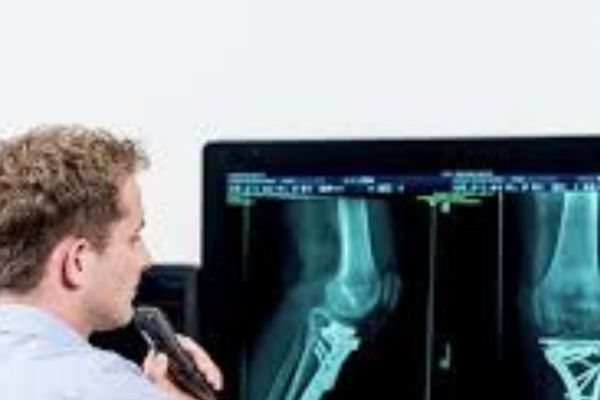Impact of RIS, Mini-PACS, and PACS on Medical Imaging

Technological breakthroughs in the fast-paced world of healthcare have dramatically revolutionized the field of medical imaging. RIS Radiology Information Systems, Mini-PACS, and Picture Archiving and Communication Systems PACS Imaging Systemhave revolutionized the management, storage, & acquisition of medical pictures. These linked systems have improved the accessibility, accuracy, & efficiency of medical imaging, resulting in better patient results & care. In this article, we will look at the features and benefits of RIS, Mini PACS, and PACS, as well as how they have evolved into essential components of modern radiology departments.
Radiology Information Systems (RIS) Fundamentals
Within a healthcare facility,RIS Radiology Information Systems serve as the central hub for managing radiology scheduling, patient data, &workflows. Radiologists, technicians, and administrators can use RIS software to streamline and automate operations including appointment scheduling, patient registration, image tracking, and reporting. RIS (Radiology Information Systems) provides a complete set of functionalities, that includes –
- Appointment Scheduling and Registration: The RIS radiology information systemallows for the effective scheduling of patient appointments, enabling for seamless coordination between the radiology department and other healthcare units. Patients can register electronically, which reduces paperwork and errors.
- Image Tracking and Workflow Management: Throughout the imaging process, RIS tracks and organizes medical pictures. It guarantees that images are labelled correctly, linked to patient records, and given to the correct radiologists for interpretation.
- Reporting and documentation: By providing radiologists with templates, speech recognition software, and tools for generating complete diagnostic reports, RIS supports accurate and timely reporting. The patient’s electronic health record (HER) is then seamlessly connected with these reports.
The Impact of Mini-PACS
Smaller healthcare facilities or specific departments inside bigger institutions use mini-PACS (Picture Archiving and Communication Systems), which are smaller versions of full-fledged PACS. Mini-PACS provides many of the same features and benefits as PACS but at a lower cost. Let’s look at some of the most important characteristics of Mini-PACS:
Image Storage and Retrieval:
Mini-PACS allows for the secure storage of medical images, removing the need for physical film archives. This digital platform enables for quick image retrieval, allowing for faster diagnosis and treatment decisions.
Image Sharing and Collaboration:
Mini-PACS systems allow radiologists, referring physicians, and other healthcare practitioners to share images and reports in real time. This encourages collaboration, improves communication, and makes multidisciplinary consultations easier.
Scalability and Flexibility:
Mini-PACS systems are simply scaled up or expanded as the facility’s demands grow. They provide storage capacity, integration with existing systems, and interoperability with a variety of imaging modalities.
Unleashing PACS’s Potential
PACS (Picture Archiving and Communication Systems) are all-in-one solutions for managing and disseminating medical images and reports across a hospital network. PACS combines multiple components, such as RIS, Mini-PACS, and additional features, to form a strong imaging infrastructure. Let’s look at the main characteristics and benefits of PACS:
- PACS enables for the centralized storage and accessibility of all medical images, regardless of the imaging modality utilized. This centralized repository allows for simple access to photos and reports from anywhere in the healthcare network, allowing for timely diagnosis and treatment.
- PACS improves workflow efficiency by automating manual processes like as image routing, pre-fetching pertinent earlier studies, and providing priority-based work lists. This saves radiologists and technicians time and improves departmental efficiency.
- PACS seamlessly integrates with Electronic Health Records (EHR) and other hospital systems, facilitating the exchange of vital patient data. This integration offers a comprehensive view of patient information, including previous imaging exams, test results, and medical history, leading to better-informed decision-making.
- Sophisticated Visualization and Analysis Tools: PACS provides sophisticated visualization and analysis tools to radiologists, enhancing their diagnostic capabilities. Image fusion capabilities, 3D rendering, & multi – planar reconstruction allow forprecise interpretation& extensive inspection of complicated medical pictures.
- To prioritize patient privacy and data security in PACS, robust measures are implemented. Encryption technologies, audit trails, and authentication systems actively safeguard patient information and medical photos, preventing unauthorized access and breaches. These measures ensure that sensitive data remains confidential and protected from any unauthorized parties.
The Impact of RIS Radiology Information Systems, Mini-PACs, and PACS Medical Imaging on Patient Care & Outcomes
The combination of RIS radiology information systems,Mini-PACS, and PACS medical imaging has significantly improved patient care& results. Here are some notable advantages:
Efficient Resource Management:
These solutions optimise resource utilization by streamlining &automating radiological procedures. From appointment scheduling to image storage management, RIS radiology information systems software, Mini-PACS, and PACS medical imagingpromote operational efficiency whileincreasing productivity& lowering expenses.
Improved Collaboration& Communication:
RIS radiology information systems, Mini-PACS, and PACS medical imaging help healthcare professionalscollaborate& communicate more effectively. Radiologists can quicklyparticipate in interdisciplinary conversations, share findings with referring physicians, &consult with experts resulting in better patient care.
Continuity of Care:
The integration of PACS& HER ensures that comprehensive patient information is available at the moment of care.
AI Integration in RIS radiology information systems and PACS: The Future of Radiology
The integration of AI algorithms into RIS radiology information systemsand PACS is defining the future of radiology, thanks to significant breakthroughs in artificial intelligence (AI). Artificial intelligence-powered technologies have enormous potential for automating image analysis, detecting abnormalities,& supporting radiologists in making accurate diagnosis.
Radiologists can benefit from higher diagnostic accuracy, reduced interpretation time, & increased efficiency by seamlessly integrating AI algorithms into RIS radiology information systems&PACS. The future holds immense promise for Artificial Intelligence – driven radiography, which will further revolutionizethis industry& eventually lead to better patient care.
Conclusion RIS Radiology Information Systems, Mini-PACS, and Picture Archiving and Communication Systems PACS medical imaging have transformed medical imaging. These networked systems improve processes, image management, and access to medical pictures and reports. The integration of RIS, Mini-PACS, and PACS leads to faster diagnoses, improved communication among healthcare providers, and enhanced patient care and outcomes. Technological advancements are actively reshaping the field of radiology and have the potential to revolutionize medical imaging practices and administration.




